Embark on a culinary adventure and discover the magic of Moroccan cuisine, known for its tantalizing Moroccan dishes. Morocco, a food lover’s paradise, offers a delightful array of flavors and techniques, from the vibrant markets to the mouthwatering street food. With its diverse cultural influences and rich history, Moroccan cuisine is a compelling blend that captivates the senses.
In this article, we delve into the history of Moroccan cuisine, shedding light on the unique flavors and ingredients that make it so special. Experience the aromatic spices, succulent meats, and flavorful tagines that define Moroccan cooking and delight the palate. Furthermore, we’ll be your guide, leading you to the best places to savor the true essence of Moroccan dishes.
Join us on a culinary journey through Morocco’s vibrant streets and bustling markets, where traditional Moroccan dishes are celebrated. Uncover the secrets behind these mouthwatering creations, passed down through generations, and prepare to indulge in the irresistible flavors that embody this remarkable cuisine.
Prepare your taste buds for a fascinating exploration of Moroccan cuisine. Whether you’re a passionate food enthusiast or simply curious to venture into new culinary experiences, this article will be your trusted guide to unlocking the culinary magic of Moroccan dishes.
A Brief History of Moroccan Cuisine
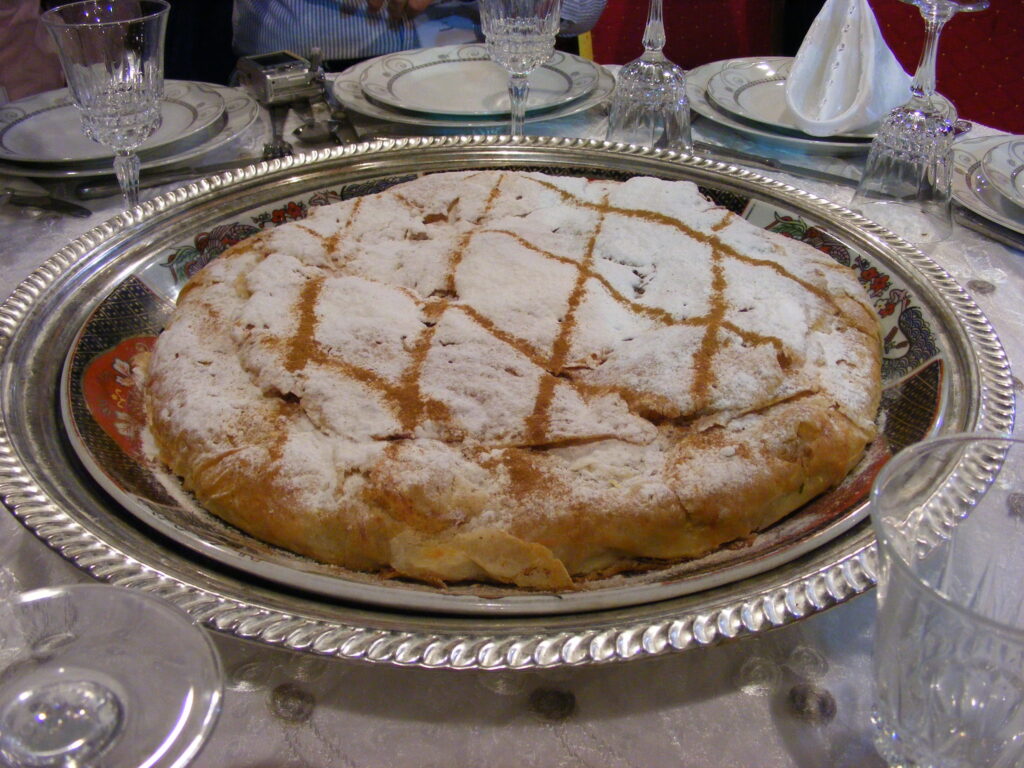
Moroccan cuisine blends various flavors and cultures that have evolved over centuries. It encompasses Arab, Berber, Mediterranean, and African influences, resulting in a unique and diverse culinary experience. The origins of Moroccan cuisine can be traced back to ancient times when the Berbers introduced staple ingredients like grains, olives, and dates, which remain integral to Moroccan dishes today.
Trade has played a significant role in shaping the culinary journey of Moroccan cuisine. Arab traders introduced spices such as cumin, cinnamon, and ginger in the 7th century. At the same time, the Moors brought their cooking techniques and ingredients like almonds and citrus fruits in the 8th century. European influence in the 16th century introduced ingredients like potatoes, tomatoes, and chili peppers to Moroccan kitchens.
The French occupation of Morocco from 1912 to 1956 had a lasting impact on Moroccan cuisine, with the introduction of French culinary techniques and ingredients like pastry making and the use of butter. Today, Moroccan cuisine is renowned for its intricate spices, slow-cooked tagines, and delectable sweet pastries. Iconic dishes like couscous, a savory stew served over semolina grains, and tagine, traditionally prepared in clay pots, showcase the rich flavors and textures that define Moroccan cooking. Don’t miss the opportunity to indulge in mouthwatering sweets like baklava and gazelle horns, crafted with almonds and honey.
Embark on a culinary adventure to Morocco and allow yourself to savor the irresistible flavors that characterize its cuisine. Let the compelling blend of spices and the artistry of Moroccan cooking captivate your taste buds. Experience the magic of Moroccan cuisine as you explore a world of vibrant flavors and cultural richness.
A Guide to Must-Try Dishes in Moroccan Cuisine
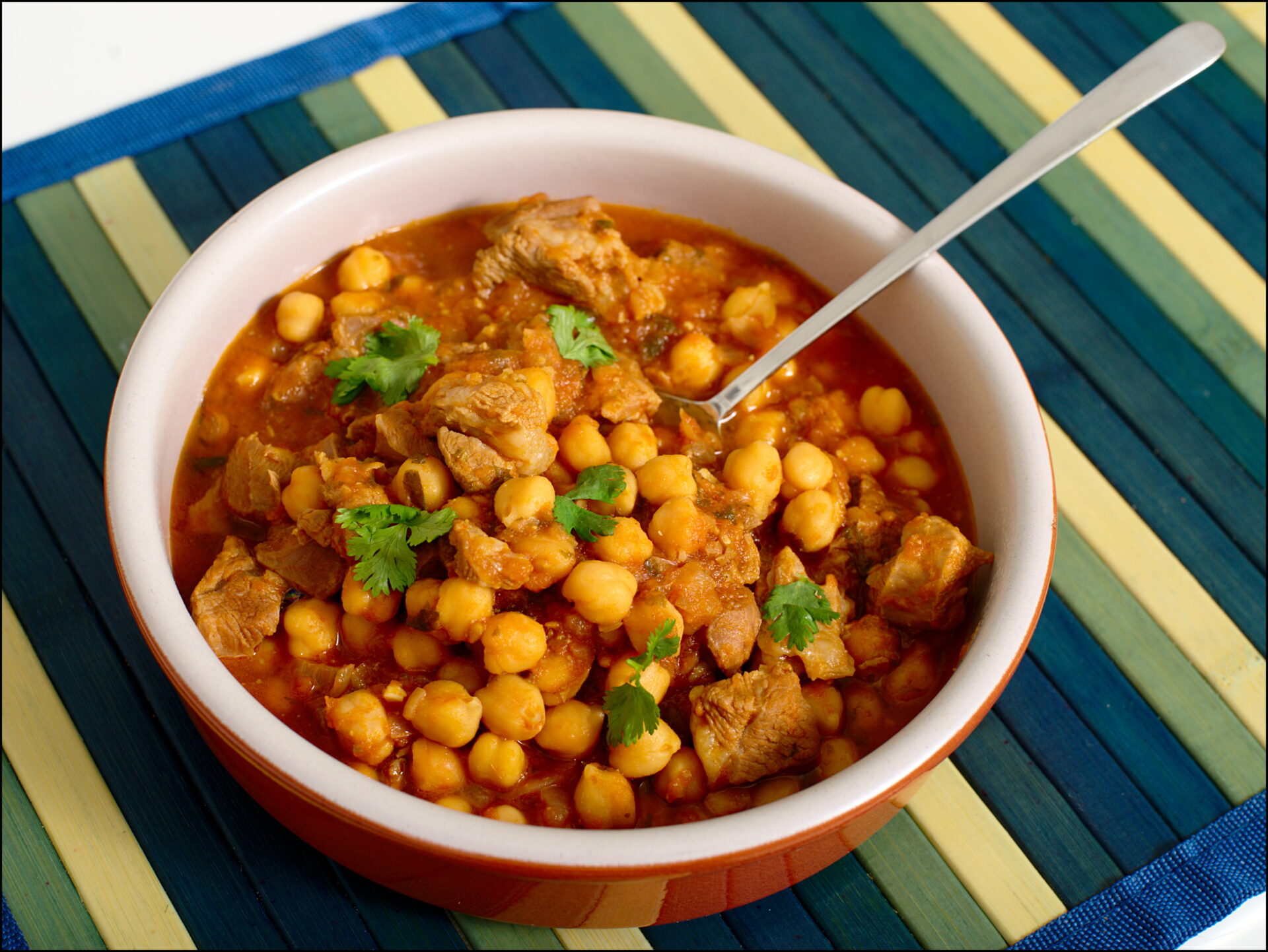
Moroccan cuisine is a feast for the senses, offering a wide range of flavorful dishes that will tantalize your taste buds. Here are some of the most popular dishes you can try during your visit to Morocco.
Tagine: A Versatile Stew
People traditionally cook tagine, a slow-cooked stew, in a conical clay pot called a tagine. One can make this dish with various meats, vegetables, and spices, making it versatile and flavorful. Some popular tagine dishes include chicken with preserved lemons and olives, lamb with prunes and almonds, and beef with vegetables.
Couscous: A Filling Staple
Couscous is a staple dish made from semolina wheat, often served with meat, vegetables, and flavorful broth. It’s typically shared among family and friends on Fridays and special occasions.
Harira: A Hearty Soup
Harira is a hearty soup typically containing tomatoes, lentils, chickpeas, and various spices. People often serve it during Ramadan as a traditional dish and accompany it with dates and bread. Harira is perfect for vegetarians and vegans and can be served as a starter or a light meal.
Pastilla: A Sweet and Savory Pie
Pastilla is a sweet, savory pastry typically filled with meat, almonds, and spices. The pie is topped with cinnamon and sugar and is a popular breakfast or snack option. If you’re looking for a snack or appetizer, try a plate of Moroccan pastries, such as the popular Chebakia, a sweet pie made with sesame seeds, honey, and spices. Or, try a dish of Briouats, savory pastries filled with spiced meat or vegetables and fried until crispy and golden.
The Importance of Spices in Moroccan Cuisine
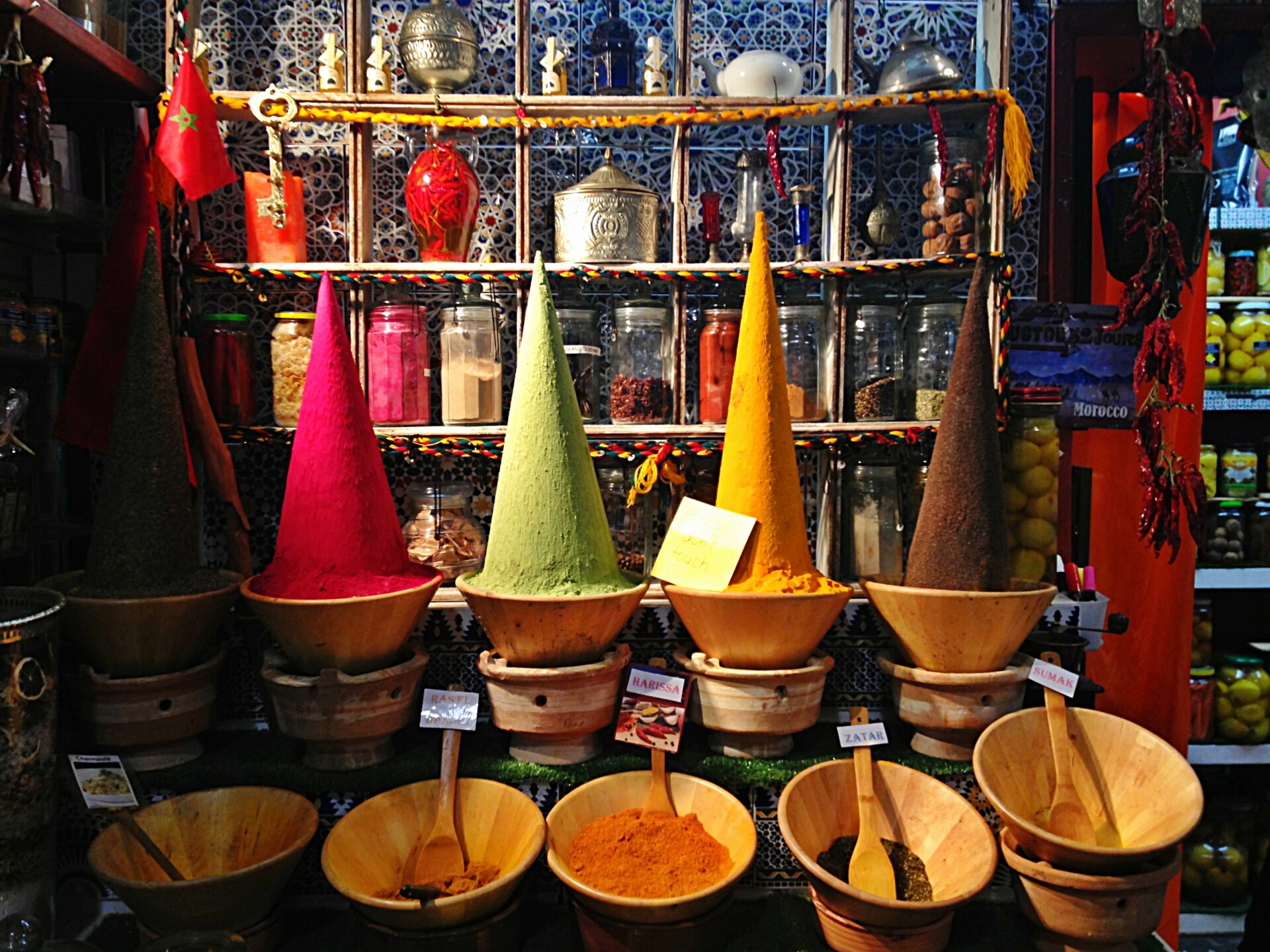
Spices are essential in Moroccan cuisine, adding rich and complex flavors to dishes. Moroccan food is known for its use of aromatic spices and herbs, such as cumin, paprika, saffron, ginger, and cinnamon. These spices enhance the taste of food and have various health benefits.
Cumin, for example, is a popular spice used in Moroccan cooking that aids digestion and is believed to boost the immune system. Paprika, another common spice in Moroccan cuisine, is rich in antioxidants and can help improve heart health. Saffron is a rare and expensive spice used in many traditional Moroccan dishes, such as tagine, to add a unique and distinct flavor.
Moroccan cuisine also includes a variety of spice blends, such as ras el hanout and baharat, which are made up of a combination of different spices. These blends are often passed down through generations and can vary from family to family.
Spices are used in savory dishes and desserts, such as the famous Moroccan pastry, baklava, which contains cinnamon and honey. Additionally, mint tea, a staple drink in Morocco, is often flavored with fresh mint leaves and sugar.
Street Food in Morocco
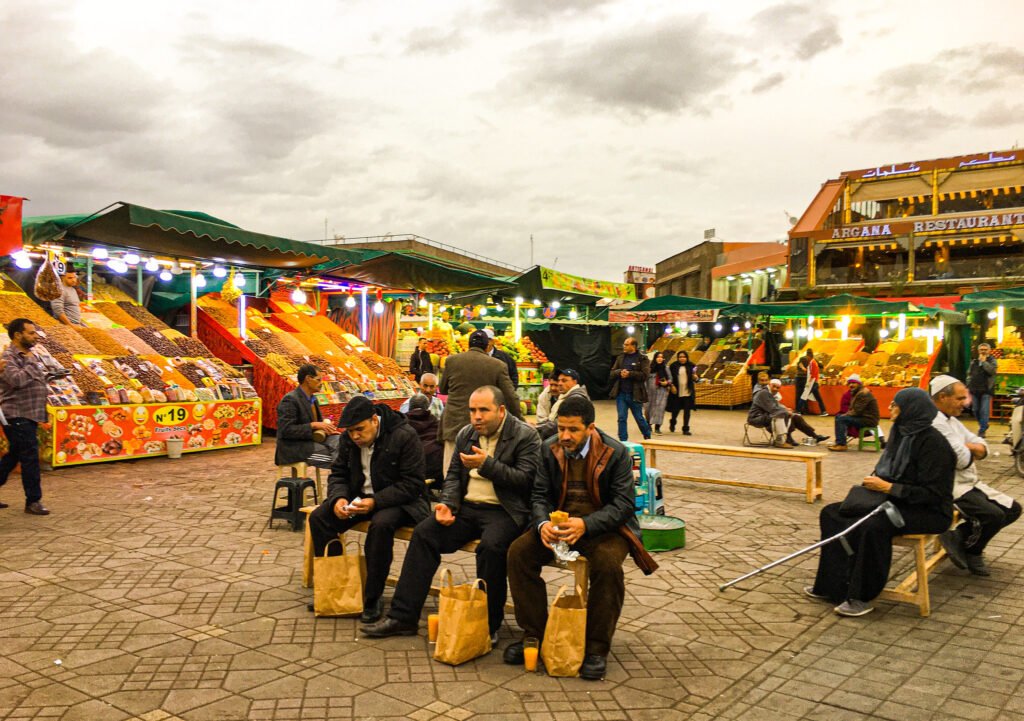
Moroccan street food is a must-try delicacy for any food enthusiast visiting North Africa. Its rich flavors, unique ingredient combinations, and exotic spices reflect the country’s diverse cultural influences and history. Throughout Morocco, small stalls and vendors offer affordable yet tasty snacks and meals.
One of the most famous Moroccan street foods is the “Bocadillo” sandwich, made with fresh bread, grilled meat, or fish and topped with harissa. The spicy red pepper paste adds a unique kick to the sandwich. Another favorite is “Msemen,” a flaky, buttery pastry stuffed with cheese, herbs, or meat, served with a hot cup of Moroccan mint tea.
Savor a variety of savory and sweet snacks such as “sardines a la plancha,” grilled sardines seasoned with cumin and paprika, “merguez,” a spicy sausage served in a sandwich or with fries, and “chebakia,” a sweet fried dough pastry coated in honey and sesame seeds.
For the ultimate experience, head to the lively souks of Marrakech, specifically Jemaa el-Fnaa Square. Here, you can find impressive food vendors offering freshly squeezed orange juice, piping hot tagines, and other dishes that will tantalize your taste buds.
In summary, Moroccan street food offers an affordable and delectable way to experience the country’s diverse and unique flavors. So come with an empty stomach and an open mind to savor the delightful offerings of Moroccan street food.
Where to Experience Moroccan Cuisine
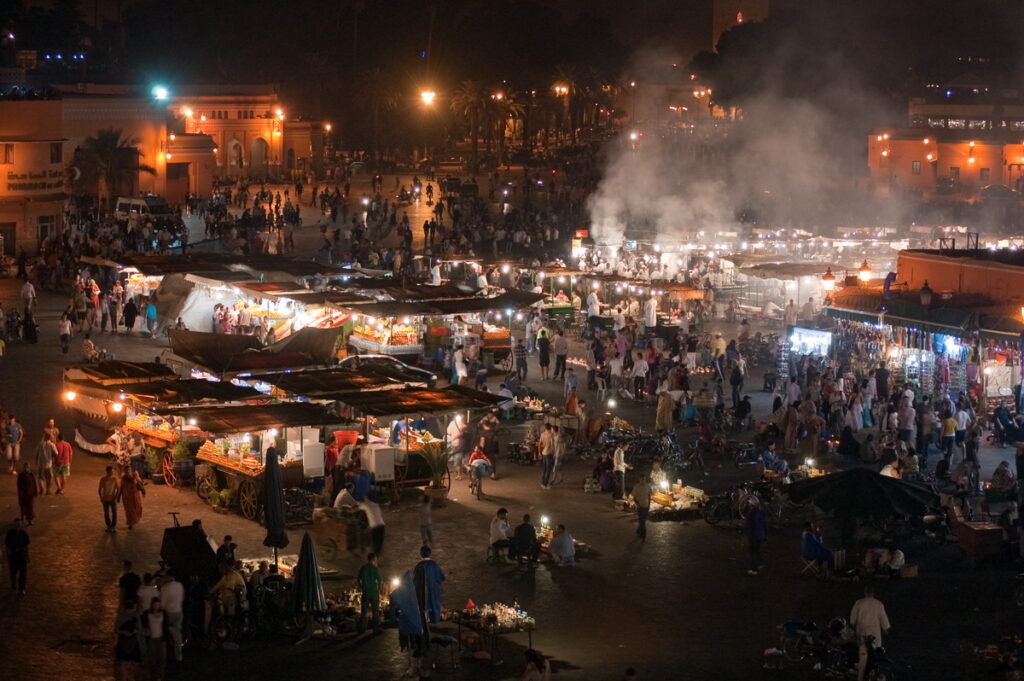
Anyone interested in Moroccan cuisine will find the country the perfect destination to indulge in its aromatic spices, flavorful stews, and diverse ingredients. Numerous options are available, from Marrakech’s bustling markets to Casablanca’s seaside restaurants.
Visitors can sample traditional street food in the medinas of Morocco’s major cities, such as Tangia, a slow-cooked meat dish, and Bissara, a hearty soup made with fava beans. Those looking for upscale dining experiences can enjoy a modern take on Moroccan cuisine in restaurants that use fresh and local ingredients.
In Marrakech’s iconic Djemaa el Fna square, food stalls offer grilled meats, seafood, freshly squeezed juices, and traditional Moroccan pastries. Seafood lovers can also enjoy grilled sardines and shrimp at beachside restaurants in the coastal city of Essaouira.
Travelers can have an immersive experience by participating in cooking classes and food tours, which often include visits to local markets. Here, visitors can interact with vendors and learn about the spices and ingredients used in Moroccan cooking.
Overall, Morocco offers countless opportunities for visitors to savor the flavors of its unique and delicious cuisine, from exploring the bustling streets of the medinas to enjoying a seafood feast by the coast.
Conclusion
Indulge in the many culinary delights of Morocco, where every dish is a delicious reflection of the country’s history and cultural influences. With its bold and aromatic spices and traditional cooking techniques, Moroccan cuisine tells a captivating story of the people and traditions that shape this enchanting land. Whether planning a trip or seeking a culinary adventure, exploring Moroccan cuisine will leave you with unforgettable flavors and a deeper appreciation for this vibrant country. So, be sure to savor the delectable dishes that await you on your journey through Morocco.
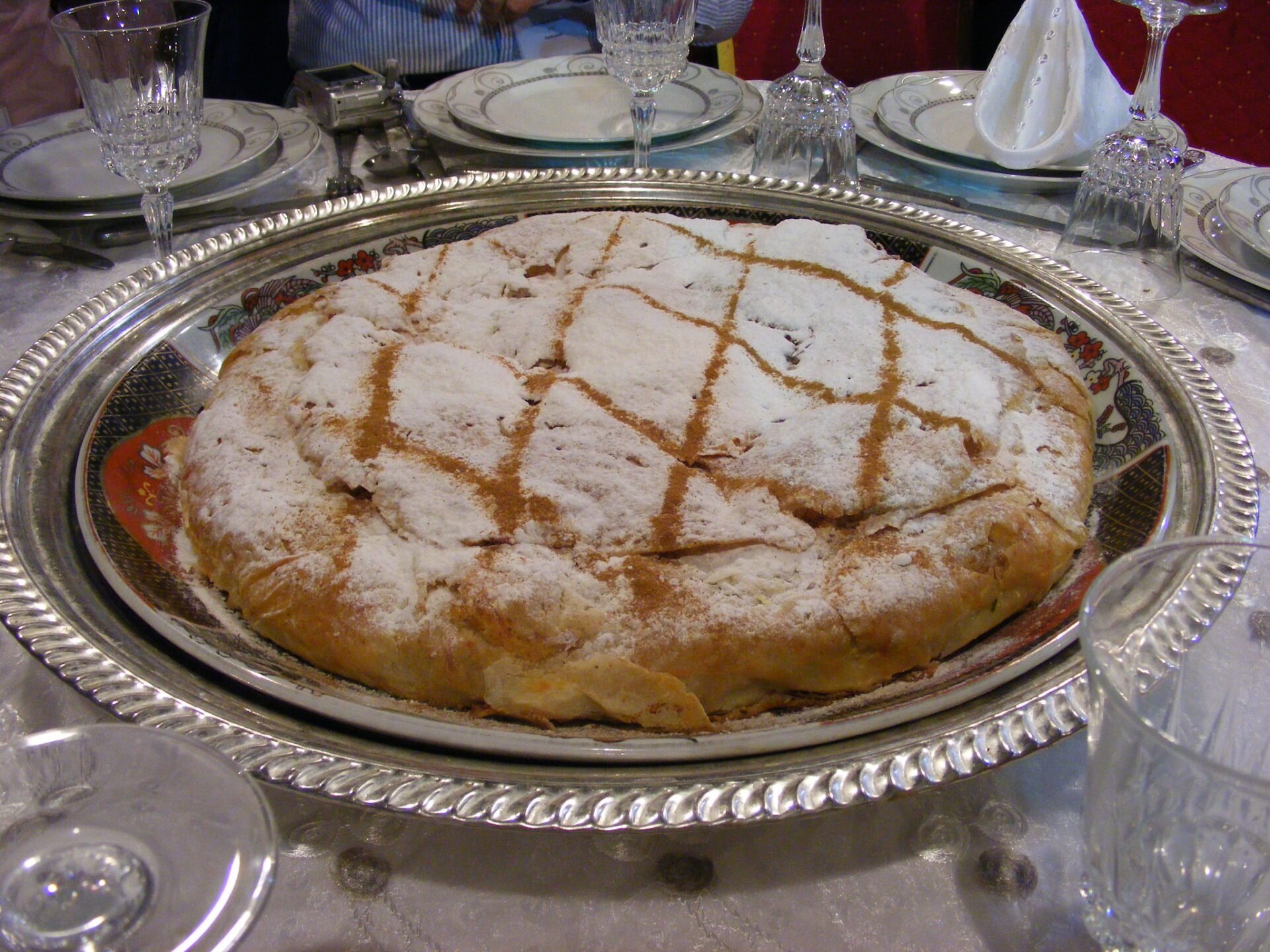


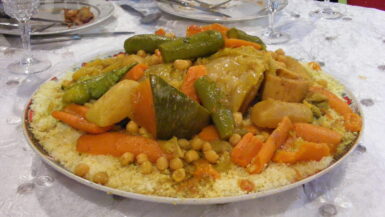
Leave a reply